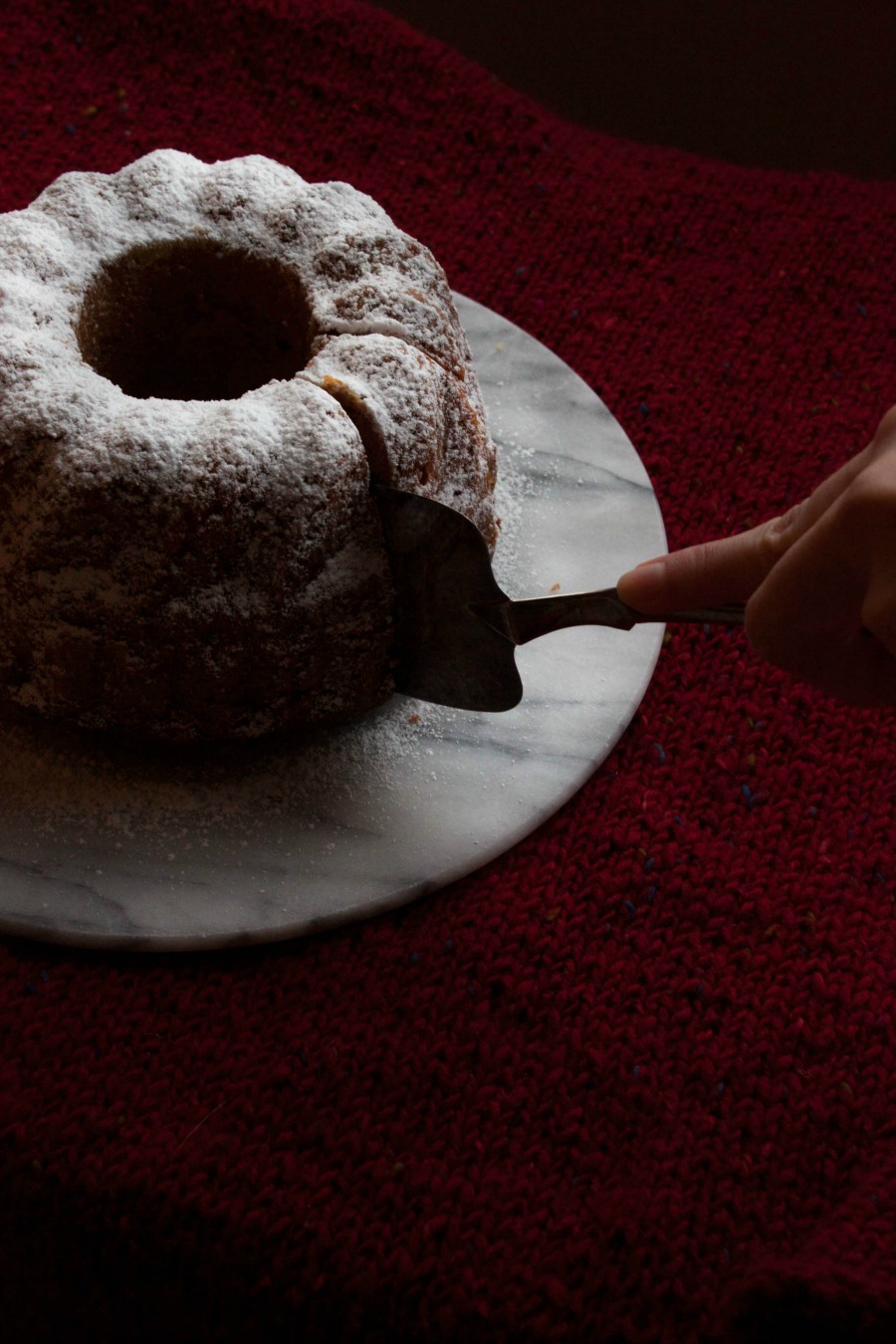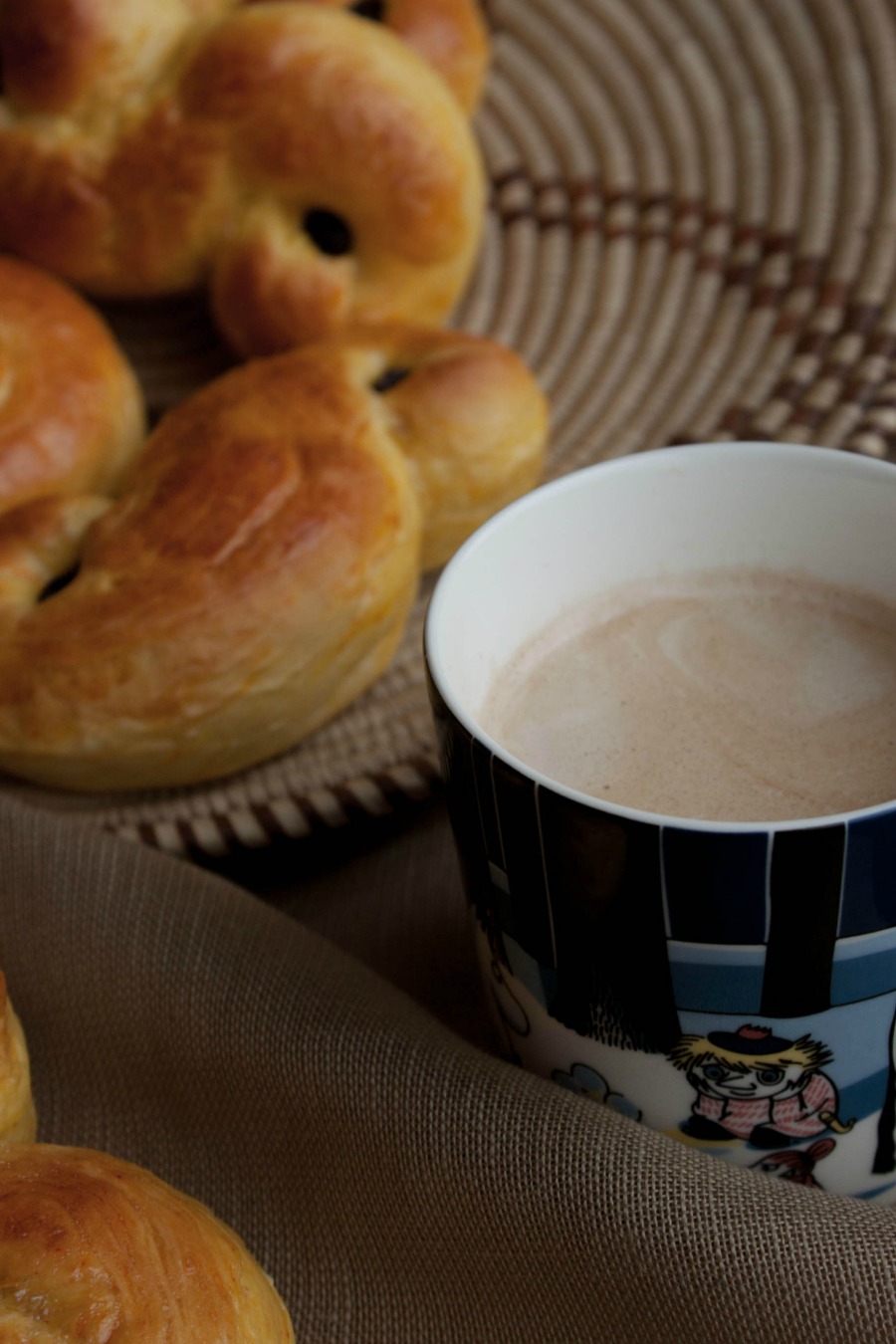Swedish Saffron Buns – 'Lussekatter'
makes about 20 lussekatter
adapted from Monikas Jul by Monika Ahlgren, p. 155
I made lussekatter, buns formed into a S-shape, but as I already mentioned there are many different shapes for these traditional buns. This is the first time I made buns using this two-dough-method. I read about it in Monika Ahlgren's cookbook and was eager to try it. Don't be afraid to make two doughs! It's neither more work nor does it take more time to make. Thanks to this method the buns rose especially well!
Dough 1
50 g (~ 3.5 tbsp) unsalted butter
5 dl (~ 2 cups; 17 fl oz) whole milk
50 g (1.7 oz) fresh yeast
1 tbsp granulated sugar
1 tsp fine sea salt
12–13 dl (~ 760–825 g; 5–5 ½ cups; 27–29 oz) bread flour (for us Scandinavians vetemjöl special)
Dough 2
1 g saffron
1 tsp granulated sugar
125 g (4 ½ oz) unsalted butter, at room temperature
2 dl (170 g; 0.8 cups; 6 oz) granulated sugar
1 egg (M)
~ 5 dl (320 g; 2 cups; 11 oz) bread flour (for us Scandinavians vetemjöl special)
1 egg, lightly beaten, to brush
small handful of raisins, for decorating
Dough 1
In a small bowl, combine the sugar, salt, and flour. Set aside. In a small saucepan, melt the butter and add the milk. Wait until the milk mixture is lukewarm and add the crumbled yeast. With a spoon, stir until the yeast is completely dissolved.
Transfer the milk mixture into a large mixing bowl (you can make the dough by hand, like me, or in a stand mixer). Gradually add the dry ingredients and knead the dough until it comes clean off the sides of the bowl. Don't overwork the dough! Shape into a ball and cover with a clean kitchen towel. Let the dough rise in a warm place for 1 hour.
Dough 2
In a mortar, grind the saffron threads to a fine powder with one teaspoon of sugar. This will make the grinding easier. However, if you use grinded saffron, which I don't recommend, you can skip this step. In a bowl of a stand mixer, cream the butter and sugar until light and fluffy. Add the egg and grinded saffron.
Combine the two doughs. Gradually add the flour while kneading. First it will look like a big mess but will come together eventually. Knead until well combined and the dough pulls away from the sides of the bowl.
Shaping the buns
Line two baking sheets with parchment paper.
Roll the dough into 40 x 1,5 cm ropes. To shape the lussekatter: roll both ends of each rope tight in opposite directions into a S-shape. Place the buns on the baking sheets. Remember to leave enough space between the buns to allow for them to expand. Cover the shaped buns with a clean kitchen towel and let rise for 20 to 30 minutes.
Meanwhile, preheat the oven to 225°C (435°F).
Brush the buns with a lightly beaten egg and place one raisin in each circle. Bake the buns for 7 to 10 minutes, or until golden brown in color. Remove from the oven and let cool slightly.
The buns are best enjoyed the same day!















